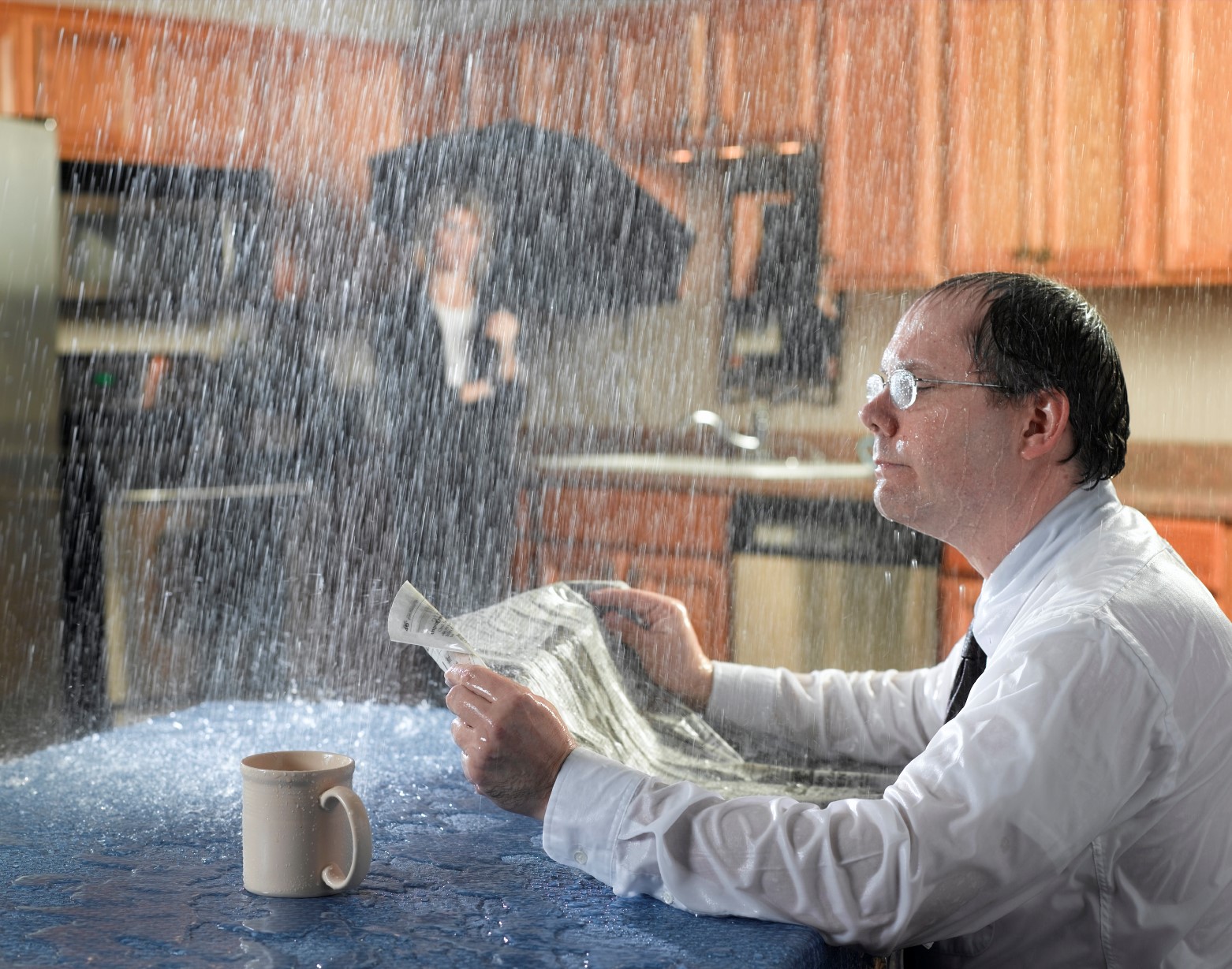Learn About Half a Dozen Common Factors Behind Water Seepage Within Your Home
Learn About Half a Dozen Common Factors Behind Water Seepage Within Your Home
Blog Article
The content following next relating to How to detect water leaks in your home is truly engaging. Don't overlook it.

Leakages not only cause waste of water however can also cause unneeded damage to your home and advertise unwanted organic development. Water leaks might go undetected because many of the pipework in our residence is concealed. By comprehending as well as looking for day-to-day scenarios that create leakages, you can shield your residence from future leaks as well as unneeded damages. Today, we will certainly consider 6 leakage causes that may be causing your pipes to leak.
Elbowing in roots
A lot of water leakages begin outside your home instead of inside it. If you see an unexpected reduction in water pressure, say in your tap, take time to head out as well as examine your backyard. You might observe damp patches or sinkholes in your backyard, and that might indicate that tree origins are invading water lines creating water to seep out. You can have your plumber check for intrusion, specifically if you have trees or shrubs near your property.
Rusty water systems
As time passes by, your plumbing system ages as well as deterioration such as corrosion might begin eating away the pipelines. This may be the reason for discoloration or bending on your water pipes. This calls for an evaluation with your plumber instantly. If our plumbing system is old, think about replacing the pipelines since they are at a greater danger of deterioration than the more recent versions.
Defective Pipe Joints
Pipeline joints can wear away over time, resulting in water leakages. If you have noisy pipelines that make ticking or banging sounds, particularly when the hot water is transformed on, your pipe joints are probably under a whole lot of pressure.
Immediate temperature modifications.
Severe temperature adjustments in our pipelines can trigger them to broaden and also acquire suddenly. This expansion and tightening may create splits in the pipes, particularly if the temperature are below freezing. It would certainly be best if you watched on how your plumbing works. The existence of the formerly discussed conditions often suggests a high threat.
Poor Water Connectors
At times, a leak can be created by loose tubes as well as pipes that supply your devices. In situation of a water connections leakage, you might discover water running straight from the supply line or puddles around your devices.
Clogged Drains
Blocked drains pipes might be irritating and also inconveniencing, but they can often wind up creating an overflow resulting in rupture pipelines. Maintain getting rid of any materials that may decrease your drains pipes that might obstruct them to stay clear of such inconveniences.
All the above are reasons for leakages but not all water leaks result from plumbing leaks; some leaks might originate from roof leakages. All leakages need to be fixed promptly to prevent water damage.
Leaks not just create waste of water however can also create unneeded damage to your home and also promote unwanted organic growth. By recognizing and also looking for everyday circumstances that trigger leaks, you can protect your house from future leaks and also unnecessary damages. Today, we will certainly look at 6 leakage creates that might be triggering your pipes to drip.
At times, a leak can be triggered by loose hose pipes and pipes that provide your home appliances. In case of a water links leak, you might observe water running straight from the supply line or pools around your home appliances.
How To Check For Water Leak In Your Home
How To Check for Leaks
The average household's leaks can account for nearly 10,000 gallons of water wasted every year and ten percent of homes have leaks that waste 90 gallons or more per day. Common types of leaks found in the home are worn toilet flappers, dripping faucets, and other leaking valves. These types of leaks are often easy to fix, requiring only a few tools and hardware that can pay for themselves in water savings. Fixing easily corrected household water leaks can save homeowners about 10 percent on their water bills.
To check for leaks in your home, you first need to determine whether you're wasting water and then identify the source of the leak. Here are some tips for finding leaks:
Take a look at your water usage during a colder month, such as January or February. If a family of four exceeds 12,000 gallons per month, there are serious leaks.
Check your water meter before and after a two-hour period when no water is being used. If the meter changes at all, you probably have a leak.
Identify toilet leaks by placing a drop of food coloring in the toilet tank. If any color shows up in the bowl after 10 minutes, you have a leak. (Be sure to flush immediately after the experiment to avoid staining the tank.)
Examine faucet gaskets and pipe fittings for any water on the outside of the pipe to check for surface leaks.
Undetected water leaks can happen without the home or business owner even realizing. If you suspect a water leak, but not able to find the source. It is time to contact a professional water leak detection service, The Leak Doctor.
How To Find a Water Leak In Your Home
https://www.leakdoctor.com/blog/How-To-Check-For-Water-Leak-In-Your-Home_AE197.html

Hopefully you enjoyed reading our post on How to detect water leaks in your home. Thanks a lot for finding the time to read through our blog post. Enjoyed our article? Please share it. Help somebody else find it. Kudos for your time. Don't hesitate to come visit our blog back soon.
Immediate repair? Phone now! Report this page